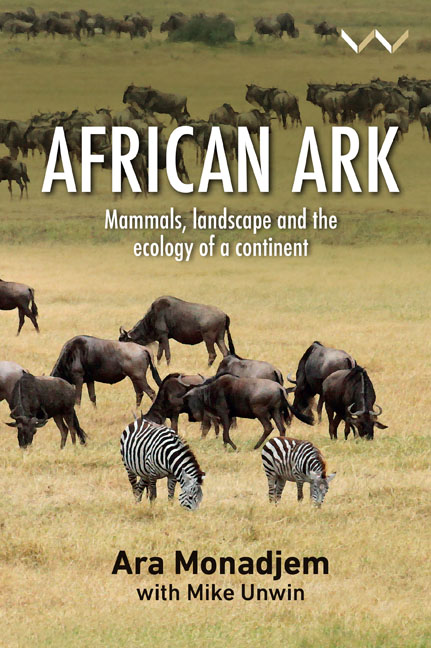Book contents
- Frontmatter
- Dedication
- Contents
- List of Plate Photographs
- List of Figures and Tables
- Acknowledgements
- Foreword
- Preface
- Chapter 1 A Continent of Plenty
- Chapter 2 The Species Conundrum
- Chapter 3 The History of Africa’s Mammals
- Chapter 4 Islands as Species Factories
- Chapter 5 Evolution on the African Mainland
- Chapter 6 Giant Mammals Shaping the Landscape
- Chapter 7 A Place for Every Species
- Chapter 8 Fluctuating Populations
- Chapter 9 The Human Factor
- Chapter 10 The Sinking Ark?
- Glossary
- Notes
- References
- Recommended Reading
- Index
Chapter 5 - Evolution on the African Mainland
Published online by Cambridge University Press: 29 November 2023
- Frontmatter
- Dedication
- Contents
- List of Plate Photographs
- List of Figures and Tables
- Acknowledgements
- Foreword
- Preface
- Chapter 1 A Continent of Plenty
- Chapter 2 The Species Conundrum
- Chapter 3 The History of Africa’s Mammals
- Chapter 4 Islands as Species Factories
- Chapter 5 Evolution on the African Mainland
- Chapter 6 Giant Mammals Shaping the Landscape
- Chapter 7 A Place for Every Species
- Chapter 8 Fluctuating Populations
- Chapter 9 The Human Factor
- Chapter 10 The Sinking Ark?
- Glossary
- Notes
- References
- Recommended Reading
- Index
Summary
In the previous chapter, we saw that islands allow us a simplified view of how localised movements between animal populations can promote genetic divergence. Being discrete entities – for terrestrial mammals, at least – they are perfect for studying the rather complicated process of evolution. An animal either makes it to an island or perishes along the way. It is an ‘all or nothing’ situation; there is no halfway house. This is not the case on the mainland. Here, an animal may move from one geographic location to another, or it may move half that distance, or a third or a fifth. As long as there is suitable habitat and a corridor to travel along, it can hypothetically move any distance between the maximum of which it is capable – which will largely be determined by its inherited features, such as its size and means of locomotion – and no distance at all. Thus, on the mainland, trying to untangle the various colonisation events and distinguish them from local radiations is a much messier affair than on islands. But we can still piece together the story of how mammals on the African continent ended up where we find them today, and you will see that it is, in its own way, just as fascinating as the stories that unfolded on its associated islands.
MOVEMENTS AND BARRIERS
No animal species is spread across the entire planet – although a few species, including our own, have done their best to achieve that. Each occurs in a particular defined region, which is known as its ‘distribution’ or ‘range’. The patterns of these distributions are determined by a variety of factors. On a local scale – say, within a large national park – species tend to be segregated by habitat (we will look more closely at this in chapters 6 and 7). However, on a global or continental scale there is often little relationship between habitats and species – as is clear from the glaring absence of species on one continent that appear in very similar habitat on another. Why, for example, are there no tigers or tapirs in the Congo Basin?
- Type
- Chapter
- Information
- African ArkMammals, Landscape and the Ecology of a Continent, pp. 99 - 124Publisher: Wits University PressPrint publication year: 2023

